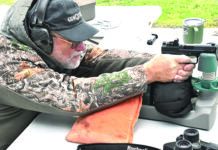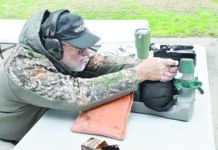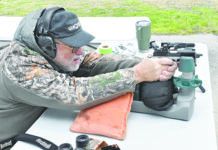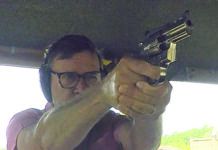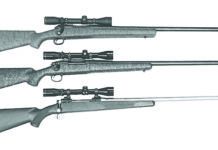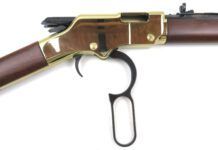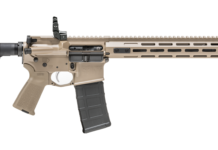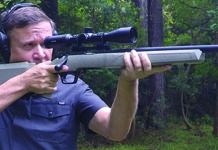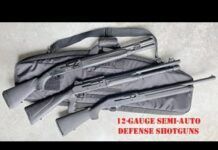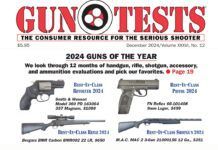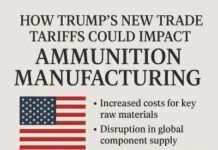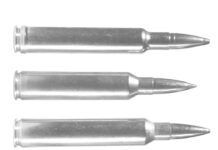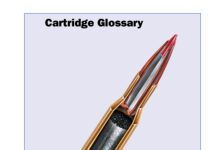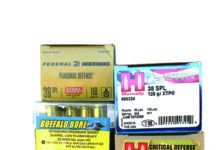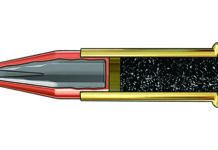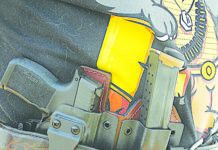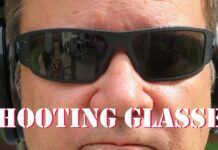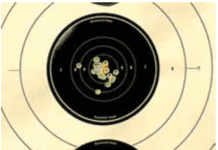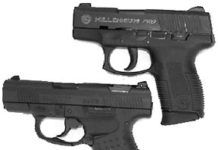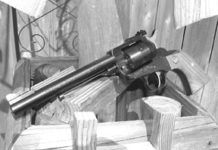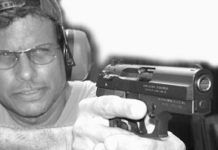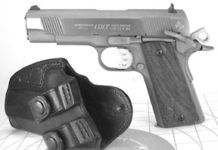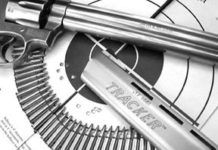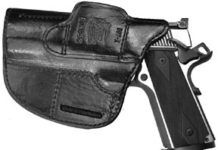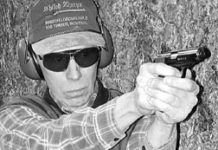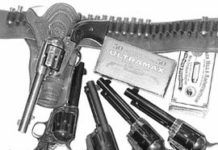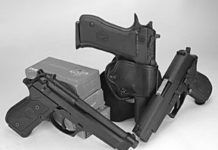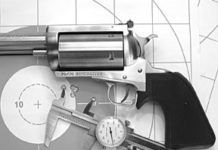Polymer 9mm Subcompact Pistols: Two Rivals Try to Challenge Glock
In this test we had a chance to shoot two 9mm pistols that take aim at Glock's throne as the most popular polymer pistol. They are the Taurus PT 111 Millennium Pro and the Smith & Wesson SW99 Compact. Actually, we would classify both of these pistols as subcompact due to their overall dimensions, despite the suffix that follows the SW99's name. However, both of these pistols do offer 10+1 capacity and, like the Glock, striker-fired operation. The Millennium Pro is made in Brazil and imported by Taurus. The SW99 is a design that was developed by Walther of Germany and is now a product of a joint operation with Smith & Wesson.
Each pistol tries to one-up the Glock design, and each other, by offering additional safety systems unique to the current slate of available polymer handguns. It didn't take long to find out if either Taurus or Smith & Wesson had come up with a better mousetrap.
.17 HMR Revolvers, Part Two: We Test Single-Action Ruger, Heritage Wheelguns
Last month's test of double-action revolvers showed two guns that suffered cylinder bind. This round, we encountered no problems whatsoever with the simpler models.
Alloy-Framed .40 S&W Compacts: We Pit SIGArms against Beretta
Looking through the pages of the many different gun magazines, any shooter might be dizzied by the advertisements alone. New models seem to appear with every issue, while simple updates in the finish or style of an old design are trumpeted as well. In this test we will try out two pistols that get less than their share of press, the $620 SIGArms P239 and the $702 Beretta Mini Cougar 8040, both chambered for the stout .40 S&W round.
The P239, first issued in 9mm, has since been successfully chambered in much more powerful calibers such as the .357 SIG (see Gun Tests, August 2001) and the .40 S&W. The P239 is unusual among the SIGArms lineup. The P239 is one of few pistols in the Sigarms lineup that feed from a single-column magazine. Like the Beretta pistol in this test, most of the SIGArms pistols use a higher-capacity double-column magazine that results in a much wider and rounder profile at the grip. In terms of compact design we think of the P239 as a TDA variation of Colt's Officer's .45 ACP model. Both pistols share the advantages of being flat and easy to conceal while offering a natural point to the shooter's hand.
Compared to the SIGArms P239, the Beretta 8040 Mini Cougar is a more sophisticated weapon. The decocker lever (found on both sides of the pistol) can also disconnect the trigger, rendering the gun completely safe. Hammer-back safety on, or cocked-and-locked carry is not an option, however.
We learned a lot more about these two pistols when we loaded magazines and went to the range. Here's what we found out.
Lightweight .45 ACP Commander Pistols: Colts Sets the Pace
To produce a sidearm that is portable, the key is to reduce weight and size. Before the advent of durable plastics such as polymer, the only alternative was to fashion the frame from a metal alloy. Minimizing the weight of the barrel and slide is generally limited to making it shorter, which also makes the gun more concealable and easier to draw. A number of manufacturers have expanded their product lineup by adding smaller and smaller versions of full-sized models while leaving the basic design intact. One of the first variations in size that stayed true to the original design was the Colt 1911 Commander. This pistol first became available shortly after World War II. The primary variation from the Government model was a reduction in barrel length from 5 inches to 4.25 inches. This made the Commander more portable and easier to handle without reducing magazine capacity.
The subjects of this test not only have shorter barrels but also employ alloy frames further reducing their weights. Our three test guns were chosen because they represent different ways of getting the job done. Of the three pistols in this test the lightweight Colt model was the most direct descendent of the original Commander. Kimber's Tactical Pro II was a radical variation with a shorter barrel set atop a full size 1911 frame. Our third test gun was the High Standard Crusader Combat Lightweight. This 1911 sells for much less than either the Colt or the Kimber, so we were hoping we had found an inexpensive downsized 1911. Here's what we learned.
Sticky Situations: Two Revolvers Chambered for the .17 HMR
Many companies have shown they can chamber revolvers with nearly any length of cartridge, but there can still be problems — in particular, maintaining headspace, the distance between the head of the cartridge and the breechface. The cause: Narrow chambers fill with debris, making complete chambering difficult. This can hamper rotation and present a safety hazard. This is especially true of rimfires, unlike a centerfire round whose primer is recessed and protected by the case. With a rimfire, there has always been concern that hitting the case edge on the breech while closing the cylinder could ignite the cartridge.
We noted function (but not safety) problems when we recently tested two double-action guns chambered for the .17 Hornady Magnum Rifle cartridge: the Smith & Wesson Model 647, $677; and the Taurus International M17 Tracker, $438. Next month, we look at two single-action revolvers chambered for the increasingly popular round.
The .17 HMR has been described as a Winchester Magnum Rifle (WMR) case necked down in the final 0.2 inches of its length to secure a boattail rifle bullet measuring approximately 0.17 inch in diameter. Given the higher velocity of this round compared to the .22 WMR, we wanted to know if accuracy would be effected pro or con. Also, would the unique profile of this rimfire round solve headspacing problems or create new ones? We began shooting to find out:
Specialty .45s: Great Shooting, or Signature Editions to Lock Away?
It is not unusual to open the pages of a gun magazine and find advertisements for guns adorned with a celebrated name or a limited-run designation—some might call them "signature" or "specialty" guns because of their unique production status. We recently tested three such pistols from two makers, Springfield Armory and Kimber. Our Springfield products were the $925 Black Stainless model and the $1,900 Rob Leatham TGO II. From Kimber, we evaluated a $1,300 Team Match II, all in all a pricey trio of .45 ACPs.
When we received our Rob Leatham TGO II signature model from Springfield Armory, we wanted to know if this was a match-ready custom pistol or a collectible. The same goes for Springfield's Black Stainless model, which was absolutely striking. It featured a combination of brushed stainless steel surfaces contrasted with an artfully applied flat-black finish. We couldn't help but wonder if this pistol was meant for "serious" work. Another 1911 .45 single stack that captured our imagination was Kimber's USA Shooting Team Match II. In terms of serious 1911 features, it seemed to have all the right stuff plus red, white, and blue checkered grips. But it takes more than fancy grips to produce excellence. We wanted to know if these pistols were shooters or showpieces. Certainly, these guns will maintain or even gain value simply by putting them in a glass case, but Gun Tests is not about the Blue Book. We are about the banging and the clanging, hitting the center of the target fast and true. In a time when custom variations of the .45 ACP 1911 abound, we wanted to find out if these guns were truly special. Was the Kimber worthy of an Olympic shooting team endorsement? Would Rob Leatham, arguably the greatest practical pistolero of all time lend his name to anything less than a stellar 1911 .45? Was the beauty of the Springfield Black Stainless only skin deep? We shot them to found out:
Surplus Pocket Pistols: Makarov Outpowers Walther and CZ .32s
The more powerful 9x18 import surplus gun is our pick, but there were no bad apples in this small-gun matchup.
3-inch .357 Magnum Revolvers: Buy Ladysmith, Rugers Wheelgun
The Smith & Wesson gun, $584, and Sturm, Ruger's KGPF-331, $529, will do great work as self-defense arms. But we would choose one over the other.
Subcompact 9mm Pistols: Our Pick for Concealed Carry and Combat
We determine the strengths and weaknesses of Kahr's $600 P9, Springfield's latest XD, $490, and the $640 Glock Model 26.
.45 Single-Action Colts and Clones: USFAs Rodeo Is Our Pick
One hundred and thirty years ago Colt's brought out its Model P, also known as the Single Action Army revolver. (For those who wonder, Sam Colt never saw the Model P. He died in 1862.) The company is still making the old thumb-buster, and a host of companies are producing clones of it in what seems to be ever-increasing numbers. The game of Cowboy Action Shooting must surely be one of the main driving forces behind the continued onslaught of fine and finer single actions, but the fact remains that these revolvers are viable sporting, hunting, and even self-defense firearms, and serve their owners in as many capacities as they did in the 1870s.
9mm Pistols: We Compare Beretta, SIGArms, and Magnum Research
The 9mm continues to be one of the country's favorite guns, if recent manufacturing data are to be believed. According to the BATF's Annual Firearms Manufacturing and Export Report for 2001, 626,836 pistols were produced (the latest year for which figures are available). Of that sum, 213,378 were in calibers above .380 to 9mm. That's almost 30,000 more for the next-largest caliber segment, guns above 9mm to .50 caliber.
More Booming Revolvers: This Time, a .30-30 BFR Struts Its Stuff
We hate to admit it, but we've been had. All this time we thought that the revolvers from Magnum Research in the May issue were in fact the true BFRs — Biggest Finest Revolvers. These guns weighed in at 76 ounces and measured nearly 16 inches in length. But along comes two BFRs that are more than 2 inches longer and weigh almost a full pound more. Now we suppose that when it comes to the .45-70 and .450 Marlin guns reviewed last month, the "B" in BFR merely stands for bigger, not biggest.
But this month we step up to two rifle cartridges chambered in our test guns, the .30-30 Winchester and .444 Marlin. Besides being a well-known rifle cartridge, .30-30 ammunition is cheap and plentiful. If we numb our hands and wrists while shooting, at least we won't stun our wallets. In the .444 Marlin revolver, we wondered how gun, and shooter, would stand up to this big, straight-walled cartridge.
We got our guns from the Magnum Research Custom Shop, so there were variations in what we tested and what's available in factory production. The .444 Marlin BFR offered by Magnum research has a round, non-fluted cylinder. Our test .444 had fluting, but was otherwise a production model. The .30-30 Win. BFR (available from Magnum Research Custom Shop, Contract Mfg. Inc., 1594 College Rd., Baxter, MN 56425, telephone [218] 824-0080) is a custom chambering which costs $1,400. The Custom Shop has developed a number of custom calibers that are not available in production revolvers, such as the .218 Bee, .45/90 Win., .38-55 Win., and .375 Win. They are all $1,400. The guns are built to order with special caliber engraving on the frame. "Magnum's Custom Shop is newly created and seeks to fill a niche for shooters who want something other than the standard BFRs," said Jim Tertin of Contract Mfg. Inc.


